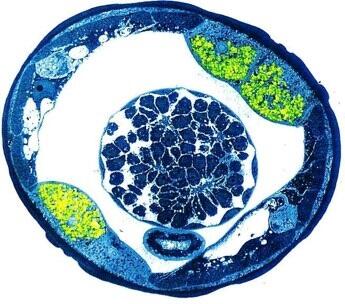
An LSTM led partnership has been awarded nearly £1.5 million from the Medical Research Council (MRC) for the pre-clinical development of a candidate drug to treat onchocerciasis and lymphatic filariasis, by targeting the bacterial symbiont Wolbachia.
Led by LSTM’s Deputy Director, Professor Steve Ward, the partnership comprises of researchers from LSTM, University of Liverpool and the pharmaceutical company Eisai Co., Ltd. In this 18-month project, the team will perform a full pre-clinical programme for the drug candidate, AWZ1066S, up to the first in man transition phase.
Professor Ward said: “Over 157 million people globally are affected by lymphatic filariasis and onchocerciasis, which are caused by filarial parasites. Current treatment strategies involving the targeting of Wolbachia with antibiotics, such as doxycycline safely kills the adult worms, but the length of treatment and contraindications in young children and pregnant women mean that it is not suitable for widespread distribution. This particular molecule has the potential to shorten that timescale of treatments from weeks to days which could significantly impact the international timetable for the elimination of these two neglected tropical diseases. We are keen to get started and I would like to thank the MRC for their confidence in our project and in the partnership, which has developed over several successful collaborations.”
The MRC award is a culmination of previous work undertaken over the past decade (funded through A∙WOL / Global Health Innovative Technology Fund (GHIT Fund) which has sought to target the bacterial symbiont that is essential in order for the parasites to live, rather than traditional treatments targeting the parasites directly.
The starting points for this programme emerged from screening activities in the A∙WOL programme funded through the Bill and Melinda Gates Foundation and managed by Professor Mark Taylor of LSTM, one of the first scientists to recognise the therapeutic potential of this strategy. Medicinal chemistry optimisation of screening hits at the University of Liverpool, headed by Professor Paul O’Neill’s group, along with the Japanese pharmaceutical company Eisai Co., Ltd. eventually generated an optimised candidate, AWZ1066S for drug development. This funding from the MRC will support the critical formal pre-clinical chemistry, analytical, toxicology and safety pharmacology development programme in order to progress AWZ1066S to the first into human transition over the next 18 months or so.